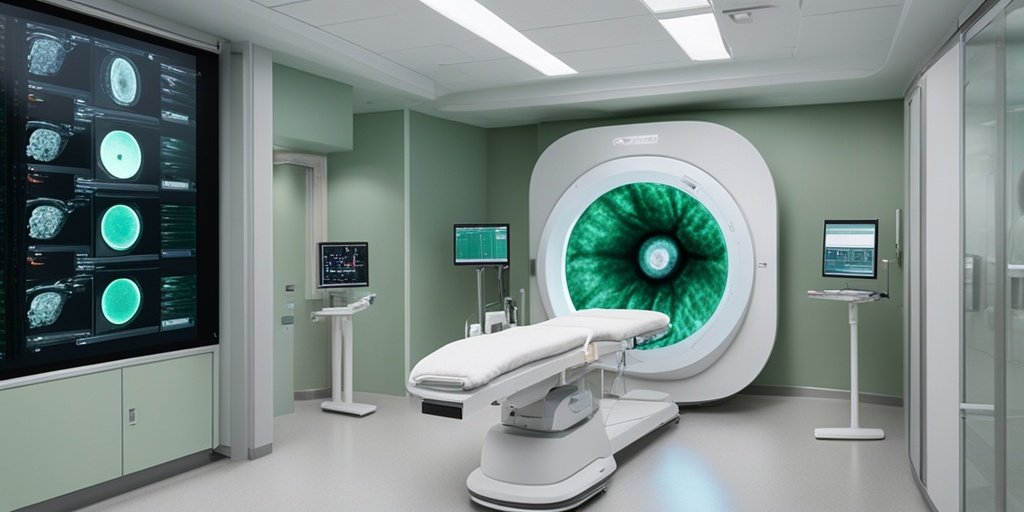⚡ Quick Summary
This article explores the role of artificial intelligence (AI) in enhancing stroke imaging, emphasizing the need for complex models to address the intricacies of stroke pathology. The potential of deep generative models is highlighted as a promising avenue for overcoming current challenges in clinical applications.
🔍 Key Details
- 📊 Focus: The intersection of AI and stroke imaging
- 🧩 Key Technologies: Machine vision, deep learning, and generative models
- ⚙️ Challenges: Noisy, incomplete, and biased data in real-world settings
- 🏆 Clinical Impact: Modest, but with significant potential for improvement
🔑 Key Takeaways
- 🧠 Stroke complexity requires advanced imaging techniques for accurate diagnosis.
- 🤖 AI technologies are evolving to provide better predictive and descriptive tools.
- 📉 Current limitations include data quality and model robustness in clinical practice.
- 🌟 Deep generative models may catalyze innovation in stroke imaging.
- 🔍 Personalized care is a key goal of integrating AI into stroke management.
- 📈 Future research is essential to optimize AI applications in healthcare.

📚 Background
Stroke is a critical medical condition characterized by a sudden disruption of blood supply to the brain, leading to complex neurological deficits. The intricate nature of the brain’s neural and vascular architecture necessitates advanced imaging techniques that can capture both macrostructural and microstructural changes. As the field of stroke imaging evolves, the integration of artificial intelligence offers a promising pathway to enhance diagnostic accuracy and treatment personalization.
🗒️ Study
The review conducted by Rondina and Nachev highlights the advancements in AI, particularly in machine vision and deep learning, which are transforming stroke imaging. The authors discuss the need for models that can handle the complexity of stroke pathology and the potential of AI to deliver individualized care through enhanced imaging capabilities.
📈 Results
The findings indicate that while AI technologies are making strides in predictive and descriptive analytics, their impact at the clinical level remains limited. The authors emphasize that the challenges posed by real-world data—such as noise, incompleteness, and bias—must be addressed to realize the full potential of AI in stroke imaging.
🌍 Impact and Implications
The integration of AI into stroke imaging holds the promise of revolutionizing how strokes are diagnosed and treated. By leveraging advanced imaging techniques and AI algorithms, healthcare providers can achieve more precise and personalized care. This could lead to improved patient outcomes and a more efficient healthcare system, ultimately benefiting those affected by stroke.
🔮 Conclusion
The review underscores the undeniable potential of AI in stroke imaging, while also acknowledging the challenges that lie ahead. As deep generative models emerge as a viable solution to current obstacles, the future of stroke management looks promising. Continued research and development in this area are crucial for translating these technological advancements into real-world applications that enhance patient care.
💬 Your comments
What are your thoughts on the integration of AI in stroke imaging? We would love to hear your insights! 💬 Join the conversation in the comments below or connect with us on social media:
Artificial intelligence and stroke imaging.
Abstract
PURPOSE OF REVIEW: Though simple in its fundamental mechanism – a critical disruption of local blood supply – stroke is complicated by the intricate nature of the neural substrate, the neurovascular architecture, and their complex interactions in generating its clinical manifestations. This complexity is adequately described by high-resolution imaging with sensitivity not only to parenchymal macrostructure but also microstructure and functional tissue properties, in conjunction with detailed characterization of vascular topology and dynamics. Such descriptive richness mandates models of commensurate complexity only artificial intelligence could plausibly deliver, if we are to achieve the goal of individually precise, personalized care.
RECENT FINDINGS: Advances in machine vision technology, especially deep learning, are delivering higher fidelity predictive, descriptive, and inferential tools, incorporating increasingly rich imaging information within ever more flexible models. Impact at the clinical front line remains modest, however, owing to the challenges of delivering models robust to the noisy, incomplete, biased, and comparatively small-scale data characteristic of real-world practice.
SUMMARY: The potential benefit of introducing AI to stroke, in imaging and elsewhere, is now unquestionable, but the optimal approach – and the path to real-world application – remain unsettled. Deep generative models offer a compelling solution to current obstacles and are predicted powerfully to catalyse innovation in the field.
Author: [‘Rondina J’, ‘Nachev P’]
Journal: Curr Opin Neurol
Citation: Rondina J and Nachev P. Artificial intelligence and stroke imaging. Artificial intelligence and stroke imaging. 2025; 38:40-46. doi: 10.1097/WCO.0000000000001333